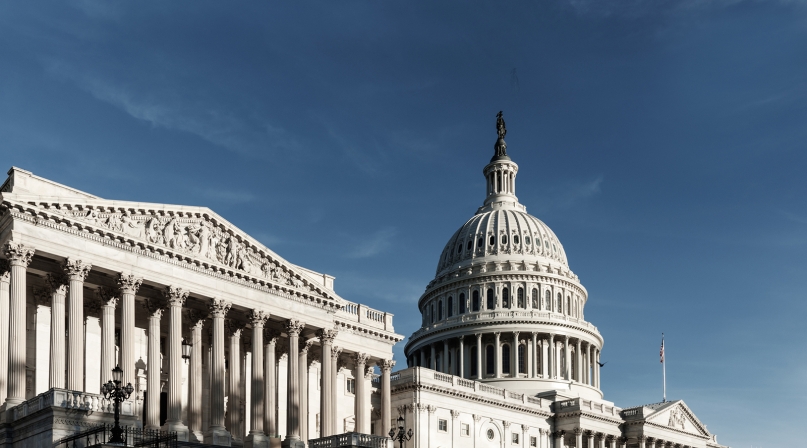Legislation addresses rising costs of disasters
Upcoming Events
Related News

A new law that tweaks Federal Emergency Management Administration programs to better help counties deal with disaster mitigation, preparedness and recovery efforts was signed into law last year by President Trump.
The law, H.R. 302, includes the Disaster Recovery Reform Act of 2018, which is designed to address the rising costs of disasters and reform federal disaster programs by placing a heavy emphasis on improving pre-disaster mitigation, reforming federal disaster recovery assistance and developing disaster preparedness guidance and training.
FEMA is actively working to implement approximately 60 reforms over the next year. FEMA’s Mitigation Directorate is responsible for implementing 26 percent of the reforms, over half of which directly impact hazard mitigation assistance programs.
One of the most exciting programs FEMA is working to implement is the Building Resilient Infrastructure and Communities (BRIC) Program which will replace the Pre-Disaster Mitigation Program. FEMA may set aside from the Disaster Relief Fund, with respect to each major disaster, an amount equal to 6 percent of the estimated aggregate amount of FEMA federal assistance. The FEMA Federal Insurance and Mitigation Directorate (FIMA) estimates that annual funds will average $300 million to $500 million per year, with significantly greater amounts following years with catastrophic disasters.
Mitigation is the effort to reduce loss of life and property by lessening the impact of disasters. Hazard mitigation can take place before or after a disaster occurs. By focusing on pre-disaster mitigation, counties can take actions to reduce human and financial consequences associated with disasters, large and small. According to FEMA, effective mitigation requires familiarity and understanding of all local risks to address hard choices and invest in long-term community well-being.
While the number of disasters is increasing, FEMA reported in 2018 that only 50 percent of events activated federal disaster assistance. In 2018, state and local governments managed 23,331 events without federal assistance. According to the National Institute of Building Sciences, on average, natural hazard mitigation saves $6 for every $1 spent.
The goal of BRIC is to encourage community-wide mitigation activities that strengthen the resilience of critical infrastructure lifelines such as transportation, energy, water supply, communications and health facilities.
As of June 6, the notice of funding opportunity for BRIC grants will be released during the summer or fall of 2020. Counties will be eligible to apply for funding to assist with small and large mitigation projects. There will be a strong emphasis on infrastructure projects, but funding for regular mitigation projects such as building elevation, property acquisitions and wind retrofits will still be eligible. BRIC grants will involve a federal/state cost share, with FEMA covering 75 percent and states providing a non-federal match at 25 percent. For low-income applicants, a 90 percent federal share and 10 percent state share option will be available.
FEMA’s stakeholder engagement process is currently underway and many of the details of the program have yet to be released. NACo has participated in FEMA-hosted workshops and webinars to advocate for the county perspective during the research phase of stakeholder engagement. NACo will continue to work with FEMA during all implementation phases to ensure BRIC works for counties across the nation.
Attachments
Related News

HRSA offers funds to aid care transitions for justice-involved individuals
On April 10, the U.S. Department of Health and Human Services’ Health Resources and Services Administration (HRSA) announced the availability of $51 million in funding opportunities open to HRSA-funded health centers. HRSA-funded health centers, which serve over 30 million patients, play a crucial role in county healthcare systems emphasizing equity and accessibility in healthcare. This new initiative focuses on supporting individuals leaving incarceration by providing health services during the critical 90 days before release, assisting justice-impacted individuals with their return to the community by expanding access to primary healthcare—including mental health and substance use disorder treatment.

DHS announces $1.8 billion in preparedness grants to advance county security and resilience
On April 16, the U.S. Department of Homeland Security (DHS) unveiled more than $1.8 billion in funding for eight preparedness grant programs in Fiscal Year (FY) 2024. These grants play a crucial role in helping county governments bolster their readiness and response capabilities against terrorism and disasters.

New targeted violence and terrorism prevention funding opportunity for counties
On April 15, the U.S. Department of Homeland Security (DHS) introduced a grant opportunity aimed at funding projects that address the risk of violence across online platforms and physical environments, whether through online, in-person or hybrid initiatives.